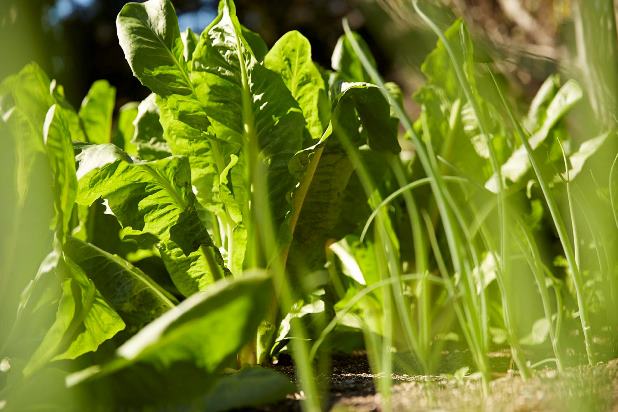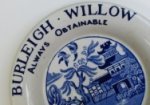As the new year kicks in and the temperature rises, January is salad time for most Australians, as a meal in itself or along side anything that can be barbequed!
The refreshingly crisp iceberg lettuce that I grew up with is enjoying a bit of a come-back at the moment, and we are spoilt for choice with myriad varieties of lettuces, mesclun mixes, pre-packed regionally themed Asian, Italian and Australian salad combinations (shredded carrot and beetroot seems to define the Australian mix), ready-made Caesars, coleslaws and more recently, kale combos. The range of dressings is even more extensive.
But what did a ‘sallad’ or ‘sallet’ involve in colonial times?
A bit of guess work
My favourite First Fleet foodie, surgeon George Worgan, wrote of ‘sallads’ being served in June 1788, just five months after landing in Port Jackson. But what might they have consisted of? And what did they look like? How were they served? These questions became most pertinent when we decided to film an ‘evocation’ of the officers’ dinner that Worgan described for our museum exhibition Eat your history: a shared table (2013-2014).
All too obvious?
Salad recipes in eighteenth-century cookbooks are highly illusive, or sometimes, conspicuous in their absence. It seems, that like many common or everyday dishes, salads were so well understood and obvious in their form that they didn’t merit being written up and published. Nineteenth-century texts, however, being more didactic and descriptive in their nature, were more revealing.
Early colonial options
Keeping in mind that the colony was in its embryo stages, many of the recommended ingredients listed in books would not have had time to grow. I scoured extant colonists’ journals from 1788 for reference looking for what salad items were being grown in the early months of settlement, and settled for endive garnished with radishes and eggs, and a ‘crisp mix’ of young celery, radish, yellow beans and cucumber. It was by no means completely ‘authentic’ but endive and radishes are fast growing, and boiled eggs ubiquitous in early salad recipes, as a key ingredient in themselves, as garnishes and in dressings (we’ll focus on dressings next week).

Freshly dug radishes in Vaucluse House kitchen garden. Photo © Stuart Miller for Sydney Living Museums
‘Instant’ cress
My concerns about salad vegies needing time to grow should have been allayed with this rather curious recipe from Hannah Glasse ‘to raise a Sallat in two hours at the fire’, in the Art of cookery made plain and easy (first published 1747) but I was a little put off by the process:
To raise a Sallat in two hours at the Fire.
Take fresh Horse-Dung hot, and lay it in a Tub near the Fire, then sprinkle some Mustard seeds thick on it, and lay a thin layer of Horse-Dung over it, cover it close and keep it by the Fire, and it will rise high enough to cut in two Hours.
I’m sure the resulting cress wasn’t the only thing that was high in that tub! Seven horses landed with the fleet in 1788, so perhaps this handy technique could have been employed to raise cress for the Officers’ salad plates, who knows??!! Phillip Gidley King planted English and ‘Cape’ (Cape of good Hope) cress in the rich soils on Norfolk Island. Planted on March 17 (just days after arriving on the Island) he noted that the Cape ones ‘came up’ on on the 20th and the English 21st. They were being harvested by the end of the month.
English vs French
Eliza Acton (so often overlooked and overshadowed by Mrs Beeton) offers a comprehensive guide to salad making in the mid-1800s. Delightfully, she describes both English and French salads, the principle difference being that the English shred, or slice the lettuces – just as we’d prepare a coleslaw.
In England it is customary to cut the lettuces extremely fine; the French, who object to the flavour of the knife, which they fancy this node imparts, break them small instead.
Remembering that Governor Phillip had a French cook I opted for the broken leaf version of salad for our exhibition, more as a nod to this quirk in Australian culinary history than any direct evidence or preference of taste.

Lettuces growing in the kitchen garden at Vaucluse House. Photo © Stuart Miller for Sydney Living Museums
Seasonal variances
Acton stresses the need for ‘tender’ lettuce leaves, mustard cress and young radishes for piquancy, and chives or green onions ‘when the taste of a party is in favour of these’ for summer salads. Young cucumbers and half-grown celery and young dandelion leaves offer a ‘slight bitterness is to many persons agreeable’ in the spring-time; fully grown celery, endive or beetroot served with any ready-dressed (suitably prepared or cooked) vegetable will supply salads through the winter. Vegetable salads could be made with young French beans, asparagus tips, cauliflower tufts, or new potatoes with finely sliced carrot and boiled artichoke bottoms liberally strewn with salad-herbs, and a splash of chilli vinegar. It is interesting to note the inclusion of stronger flavoured elements – bitter greens, sharp flavoured herbs, a bit of chilli heat, but onion was always suggested with caution – only used sparingly, and only if agreeable to the diner.
Meatlovers salad
It was not uncommon for salads to include meat of some kind, generally ham or cold chicken, veal or beef, or fish – herrings, anchovies and even lobster, conjuring memories of salad dinners from my childhood in the 1960s and 70s (not that we had lobster too often – more likely ham and tinned pineapple!). Some recipes call for the ingredients to be tossed through together, others carefully layered one above another over a bed of lettuce or artfully arranged around a serving dish in ribbons or chains. Ingredients were chosen for colour and texture, either contrasting or coordinating, tongue would be grated or chicken chopped finely for softness, contrasting with celery or cucumber for crunch. Beetroot or red cabbage and pink coloured ham or corned beef offered a foil for the typical green and white of most salad vegetables. The ‘crowning glory’ of the table might sometimes be salmagundy, an all-but-lost salad very popular in the late eighteenth-century, which we’ll talk about further, later in the month.
References
Eliza Acton, Modern cookery for private families (1845) facsimile edition, Southover Press, 1993.





